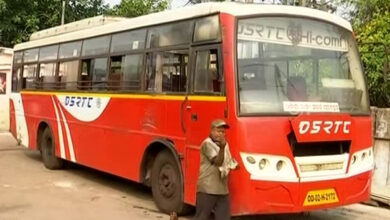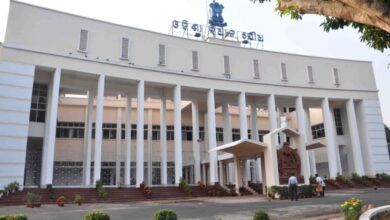ସତ୍ୟଶିଖା (ନୂଆଦିଲ୍ଲୀ) ୧୨/୦୨/୧୦୨୧ : ମେରଠର ଜିଲ୍ଲା ହସ୍ପିଟାଲରୁ ଏକ ଲଜ୍ଜାନୀୟ ଘଟଣା ସାମ୍ନାକୁ ଆସିଛି । ପ୍ରେମ ସପ୍ତାହ ଚାଲିଥିବା ବେଳେ ଚକୋଲେଟ ଡେ’ରେ ଜଣେ ଡାକ୍ତରାଣୀଙ୍କୁ ଚକୋଲେଟ ଦେଇ ଡାକ୍ତର ଦୁଷ୍କର୍ମ ଉଦ୍ୟମ କରିଥିବା ଅଭିଯୋଗ ହୋଇଛି । ସୂଚନାଯୋଗ୍ୟ, ପୀଡିତା ମହିଳା ଡାକ୍ତରଙ୍କ ସେଦିନ ରାତି ଡିୟୁଟି ପଡ଼ିଥାଏ । ସେ ରାଉଣ୍ଡରେ ରୋଗୀଙ୍କୁ ଦେଖୁଥିବା ବେଳେ ଲେବର ରୁମକୁ ଯାଇଥିଲେ । ଡାକ୍ତରାଣୀଙ୍କୁ ଲେବର ରୁମକୁ ଯିବା ଦେଖି ସେହି ହସ୍ପିଟାଲର ବିବେକ ନାମକ ଜଣେ ଡାକ୍ତର ତାଙ୍କ ପିଛା କରିଥିଲେ ।
ରାତି ହୋଇଥିବାରୁ ଲେବର ରୁମ ନିକଟରେ କେହି ନଥିବାର ସୁଯୋଗ ନେଇ ଡାକ୍ତର ବିବେକ ପ୍ରଥମେ ଡାକ୍ତରାଣୀଙ୍କ ସହିତ କଥା ହୋଇଥିଲେ । କଥା ହେବା ଆଳରେ ସେ ମହିଳା ଡାକ୍ତରଙ୍କୁ ଚକୋଲେଟଟିଏ ବଢ଼ାଇ ଦେଇଥିଲେ । ଯେମିତି ହିଁ ଡାକ୍ତରାଣୀ ଉକ୍ତ ଚକୋଲେଟକୁ ଧରିଥିଲେ ବିବେକ ତାଙ୍କ ସହିତ ଖରାପ ବ୍ୟବହାର କରିବା ସହିତ ଦୁଷ୍କର୍ମ କରିବାକୁ ଉଦ୍ୟମ କରିଥିଲେ ।
ଡାକ୍ତରାଣୀ କଳେବଳେ କୌଶଳ ଘଟଣାସ୍ଥଳରୁ ଖସି ଆସି ପୁଲିସରେ ଖବର ଦେଇଥିଲେ । ଖବର ପାଇ ପୁଲିସ ଉକ୍ତ ଡାକ୍ତରଙ୍କୁ ଖୋଜୁଥିବା ବେଳେ ସେ ଫେରାର ରହିଛନ୍ତି । ଜିଲ୍ଲା ହସ୍ପିଟାଲ ପରିଚାଳକଙ୍କ କହିବାନୁସାରେ, ଡାକ୍ତରଙ୍କ ଉପରେ ବିଭାଗୀୟ ତଦନ୍ତ କରାଯାଉଛି । ଯଦି ସେ ଏହି ଘଟଣାରେ ଦୋଷୀ ସାବ୍ୟସ୍ତ ହୁଅନ୍ତୁ ତେବେ ଉକ୍ତ ଡାକ୍ତରଙ୍କ ବିରୋଧରେ କଠୋର କାର୍ଯ୍ୟାନୁଷ୍ଠାନ ଗ୍ରହଣ କରାଯିବ ।









